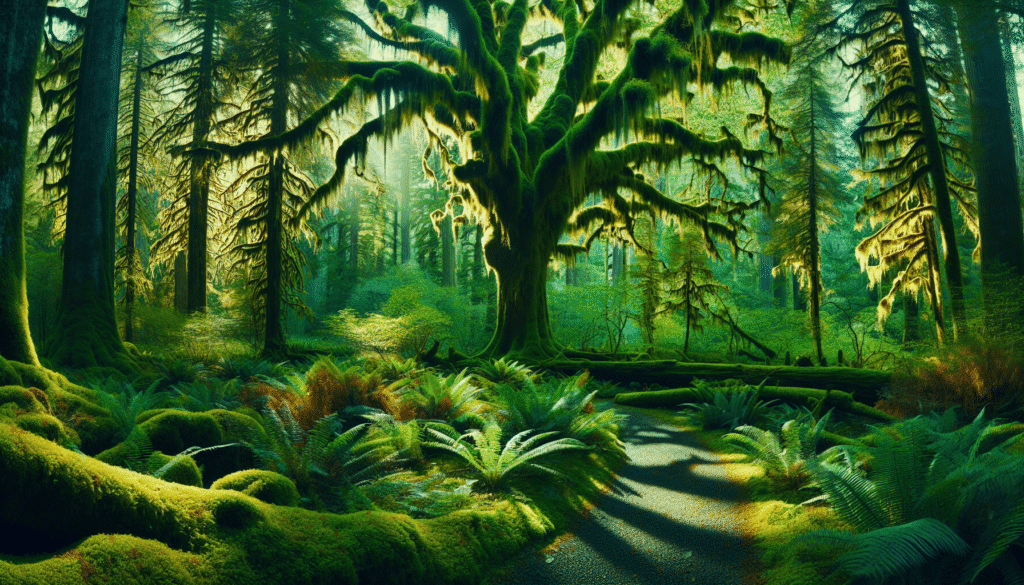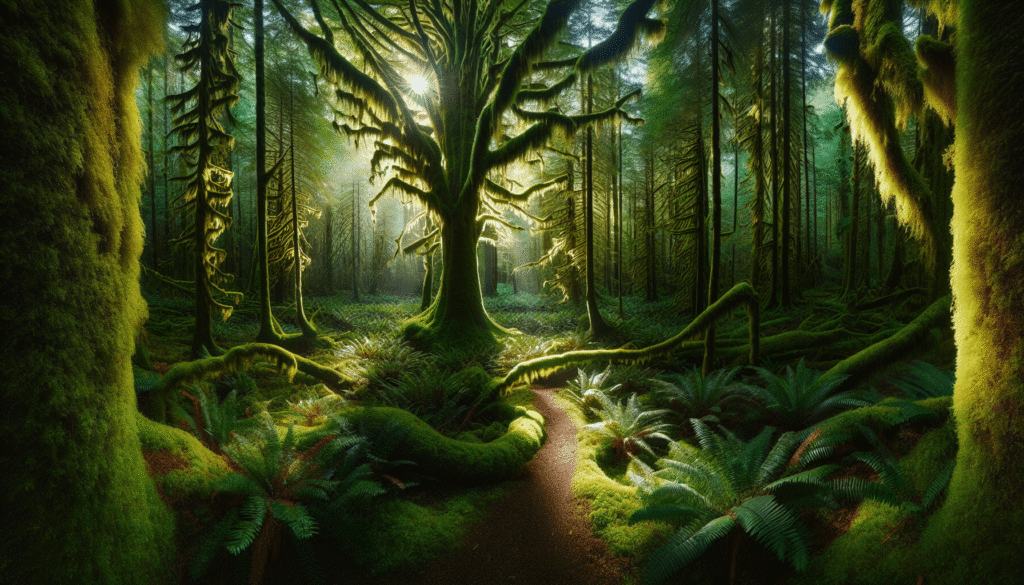Have you ever wandered through a forest, feeling the dampness of the air and smelling the fresh earth beneath your feet? The beauty of a temperate rainforest can truly take your breath away, especially the magical experience offered by the West Coast Temperate Rainforest Trail in Canada. This unique ecosystem is not only stunningly beautiful but also rich in biodiversity and a perfect destination for nature lovers.

Understanding the West Coast Temperate Rainforest
What is a Temperate Rainforest?
Temperate rainforests are one of the world’s rarest ecosystems, characterized by high levels of precipitation, mild temperatures, and a diverse range of plant and animal life. You’ll notice towering trees, sprawling ferns, and a carpet of moss covering the ground. The lush environment creates a serene atmosphere unlike any other.
Location and Geography
Located primarily on the Pacific Coast of Canada, this rainforest stretches along the coastlines of British Columbia. It’s a haven for various wildlife and plant species, making it an important ecological site. This region receives significant rainfall, which contributes to the growth of dense vegetation.
The Importance of the Ecosystem
Biodiversity
The West Coast Temperate Rainforest is one of the most biodiverse areas on the planet. From massive old-growth trees, like Douglas firs and western red cedars, to a variety of understorey plants, this ecosystem supports numerous wildlife species. You might come across deer, black bears, and a rich variety of birds along your journey.
Climate Regulation
Forests play a crucial role in regulating the Earth’s climate. They absorb carbon dioxide and help mitigate the effects of climate change. The West Coast Temperate Rainforest, with its expansive tree cover, captures carbon efficiently and contributes to local climate stability.
The Trail Experience
Trail Overview
The West Coast Temperate Rainforest Trail is designed for those who crave adventure while embracing nature’s wonders. Stretching roughly 100 kilometers, it offers various sections suitable for both novice and experienced hikers. Each section presents new sights, sounds, and experiences.
Best Time to Visit
While the trail is open year-round, the best time to visit is during the late spring and summer months, when the weather is mild and the flora is in full bloom.
| Month | Average Temperature (°C) | Average Rainfall (mm) |
|---|---|---|
| January | 5 | 200 |
| April | 10 | 100 |
| July | 18 | 40 |
| October | 12 | 150 |
What to Bring
For a successful hiking experience, it’s essential to come prepared. Make sure to take the following essentials with you:
- Appropriate Footwear: Waterproof hiking boots are a must, as the trail can be muddy.
- Weather Gear: A waterproof jacket and layers are important to tackle fluctuating temperatures.
- Water and Snacks: Hydration is vital, so carry enough water and some light snacks to keep your energy levels up.
- Navigation Tools: A map or GPS device will help you stay on track.
Safety Tips
While the trail is generally safe, it’s important to take some precautions:
- Travel in Groups: Hiking with others increases your safety.
- Wildlife Awareness: Be conscious of the local wildlife, including bears. Know how to store food safely.
- Stay on Marked Trails: This helps protect both you and the fragile ecosystem.
Highlights Along the Trail
Unique Flora
As you wander along the trail, take time to notice the unique plant life. The towering trees create a canopy that filters sunlight, allowing a variety of ferns and mosses to thrive below.
- Moss and Lichens: You’ll notice a thick carpet of lush green moss and intricate lichens draping the trees and rocks, which gives the forest its enchanting feel.
Water Features
You’ll encounter beautiful streams, rivers, and even waterfalls along the trail. The sound of rushing water adds to the tranquility of the region.
- Cameron Falls: A stunning sight that showcases the powerful flow of water amidst the serene forest environment.
Wildlife Encounters
You might be fortunate enough to spot various wildlife species during your hike. Keep a lookout for:
- Bears: Black bears are common in this area, especially in the summer months.
- Birds: The trail is home to diverse bird species, including eagles and woodpeckers.
- Deer: Often seen grazing near the trail, they usually don’t pose a threat but are a delight to observe.

Cultural Significance
Indigenous Peoples
The West Coast Temperate Rainforest holds deep cultural significance for Indigenous Peoples. Many tribes, such as the Nuu-chah-nulth and Coast Salish, have lived sustainably in this environment for thousands of years, respecting and harnessing its resources without depleting them.
- Traditional Practices: Indigenous communities use plants from the forest for medicinal purposes, as well as for crafting materials and food.
Historical Context
Throughout history, the rainforest has been a vital part of the Canadian identity. The region has seen the impact of European colonization, which has raised awareness around conservation efforts to preserve this unique ecosystem.
Environmental Challenges
Climate Change
Unfortunately, the West Coast Temperate Rainforest is not immune to the effects of climate change. Rising temperatures and changing precipitation patterns pose significant threats to the delicate balance of this ecosystem.
- Increased Wildfires: A changing climate can lead to more frequent and intense wildfires, which disrupt biodiversity.
Commercial Activities
Logging has historically been a major industry in this region, resulting in the loss of some old-growth forests. The ongoing fight for conservation continues as more people recognize the value of preserving these vital ecosystems.
Conservation Efforts
Protected Areas
Several organizations and government bodies are working tirelessly to protect the West Coast Temperate Rainforest. National parks such as Pacific Rim National Park Reserve and Clayoquot Sound UNESCO Biosphere Reserve play a crucial role in safeguarding its unique biodiversity.
Community Initiatives
Many local communities are getting involved in conservation efforts, recognizing the importance of sustainable practices. Participating in local clean-up events or supporting eco-friendly businesses helps promote a healthier environment.
Activities Besides Hiking
Bird Watching
This area is a paradise for bird watchers. With a variety of habitats, you can spot numerous species throughout the year. Grab your binoculars and keep an eye out for rare birds like the Marbled Murrelet.
Camping
If you want to immerse yourself in the experience, consider camping. There are designated camping areas along the trail that allow you to enjoy the beauty of the forest overnight.
Kayaking and Canoeing
In addition to hiking, the surrounding water bodies offer opportunities for kayaking and canoeing. Paddle through calm waters and enjoy the sights and sounds of the forest from a different perspective.
Suggested Routes on the Trail
Family-Friendly Routes
If you’re traveling with family, consider scenic sections of the trail that are less strenuous. These paths offer beautiful views without challenging elevations.
Recommended Day Hikes
For those who prefer shorter hikes, there are several segments that you can conquer in a day. Don’t forget to take breaks and soak in the beauty around you.
| Route Name | Distance (km) | Duration (hrs) | Difficulty Level |
|---|---|---|---|
| Rainforest Walk | 5 | 2 | Easy |
| Waterfall Loop | 8 | 3 | Moderate |
| Summit Trail | 12 | 5 | Challenging |
Preparing for Your Adventure
Physical Preparations
Before embarking on this adventure, it’s a good idea to prepare your body. Going for regular walks or hikes will build your endurance and help you enjoy the journey more.
Mental Preparations
Equally important is mental preparation. Take a moment to meditate or bring along a journal. This allows you to fully embrace the experience and reflect upon your time in nature.
Final Thoughts
As you consider a visit to the West Coast Temperate Rainforest Trail, imagine the sights, sounds, and feelings that await you. This remarkable ecosystem, with its towering trees and diverse wildlife, offers a chance to reconnect with nature and appreciate the beauty around you. Just remember to tread lightly, respect the environment, and enjoy every moment of your adventure in this lush, vibrant region of Canada.

